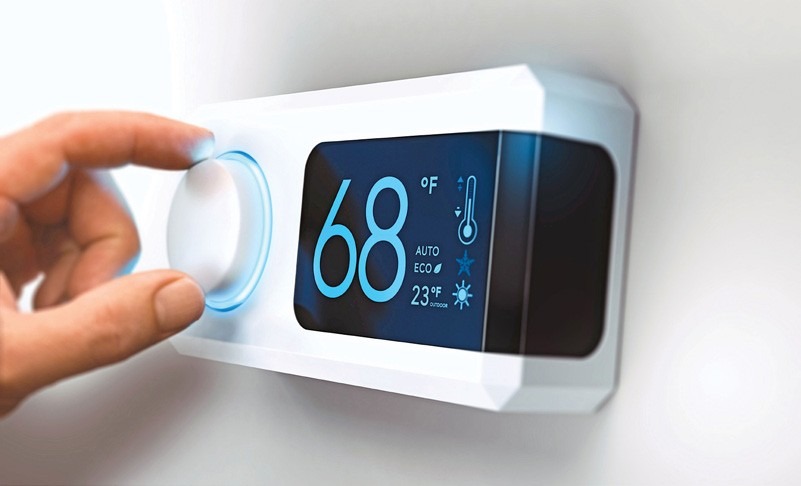The average U.S. household will pay about $637 in heating costs this winter. Here, learn simple strategies to cut your bill in half.
Save hundreds each year with a thermostat trick
For every degree you turn down your thermostat, you can save up to 3 percent per hour. If your house will be empty while you’re at work, for example, going 8–10 degrees cooler is ideal. Just avoid going below 60°F to prevent the potential of frozen pipes.
Get cozy for pennies with a tea kettle
We feel warmer when the air is more humid. “One of my favorite ways to increase humidity is to leave a kettle on the stove,” says Randy Huckstadt, HVAC expert for JustAnswer.com. “The steam raises both indoor temperature and humidity.” Same goes for leaving the bathroom door open after you shower and opening the dishwasher to let the dishes air dry.
Stop sneaky drafts by checking under the sink
Sure, you know that windows and doors can be drafty, but heat can also escape from under your kitchen and bathroom sink cabinets, says Allison A. Bailes III, Ph.D. (EnergyVanguard.com). “They typically lead to uninsulated areas, such as the basement or a crawlspace, where cold air can come through.” If you discover a gap around pipes, just fill it in with expanding foam.
Plug up fireplaces with a blanket
We love to curl up by a roaring fire this time of year, but when it’s not in use, the fireplace can cause a room to lose a whopping 20 percent of its heat, says Michelle Nelson, host of the podcast Build Your House University. The simple solution? Consider buying a fireplace blanket, which is designed to attach to the opening of the fireplace. While you can find magnetic versions for about $20 in stores, it’s perfectly effective—and less expensive—to simply tape an extra throw blanket over the opening of the fireplace.
Keep warm air in by closing the garage
The most common escape routes for heat? Your garage and attic. Simply try to keep your garage closed to increase warmth, urges Mike Clear, VP of Operations at American Home Shield. “And because heat rises, be sure the door or panel to your attic is sealed with caulk or weather stripping.”






